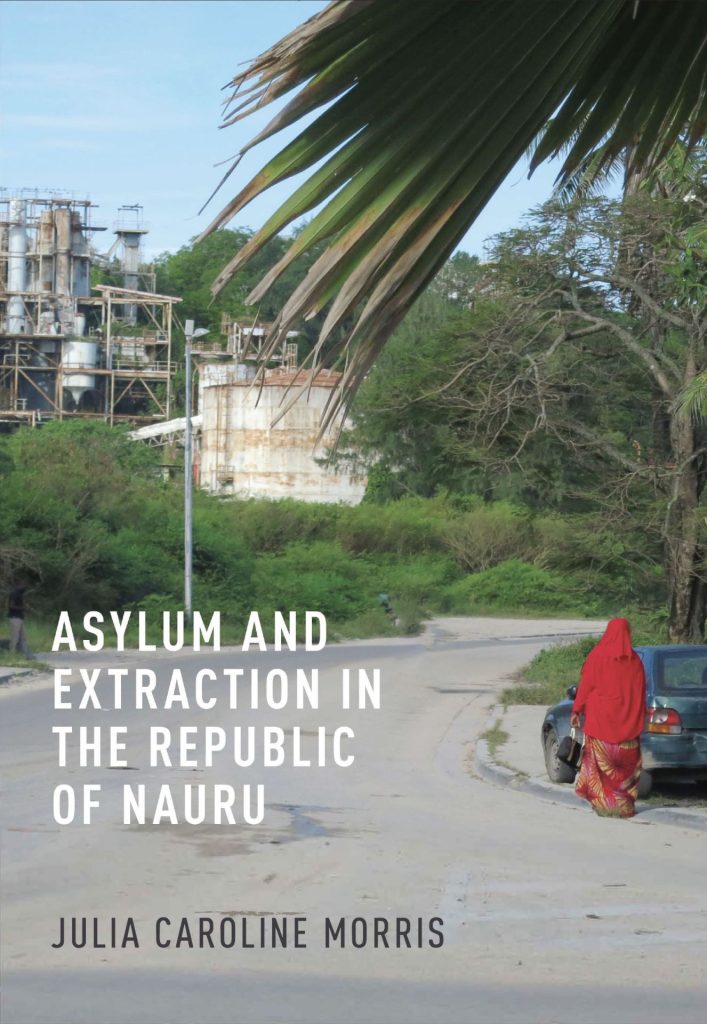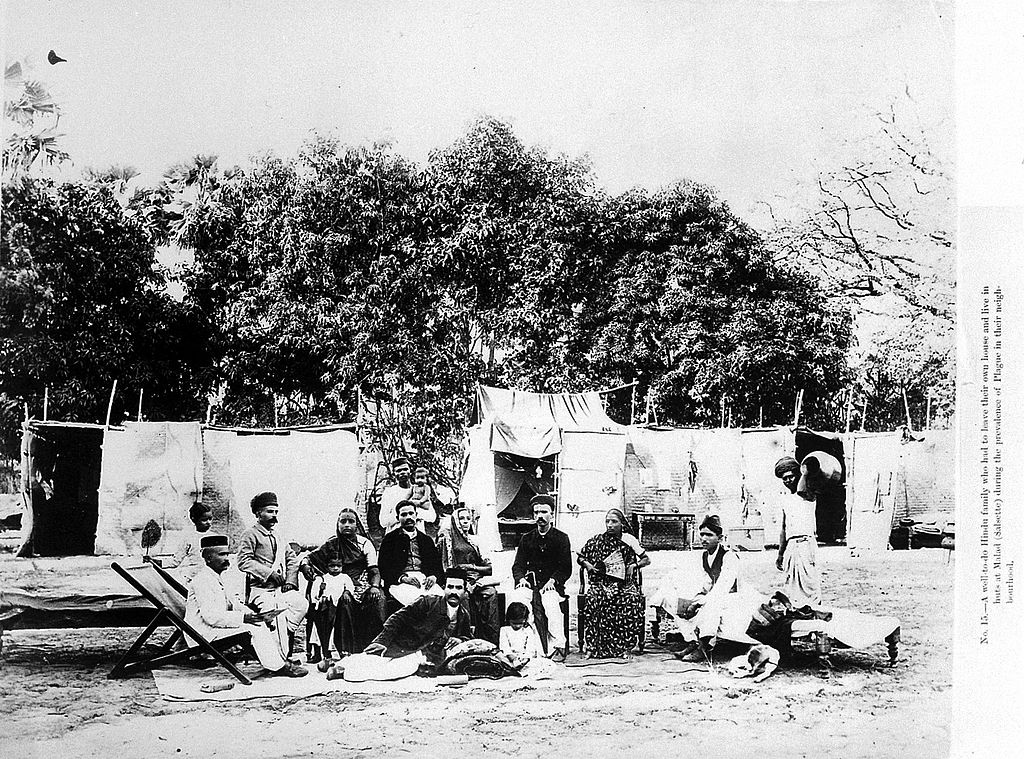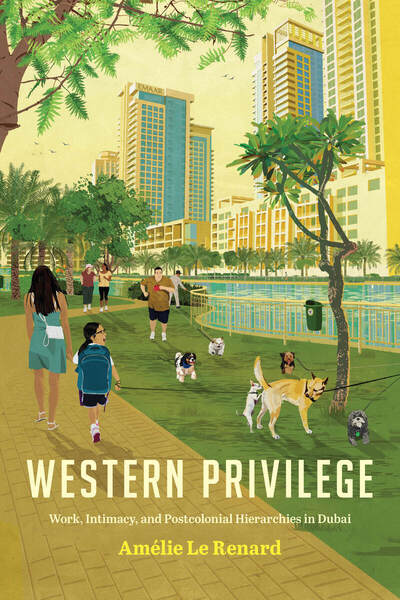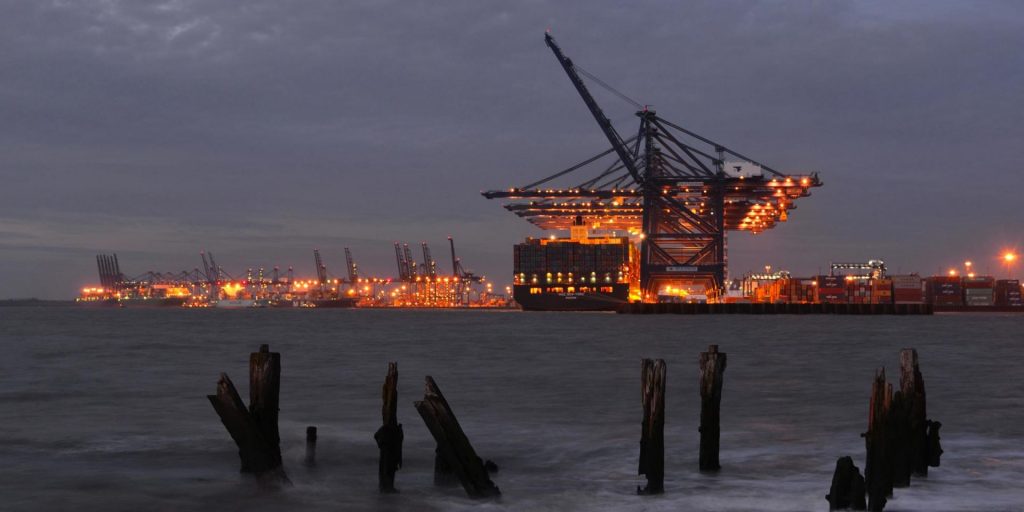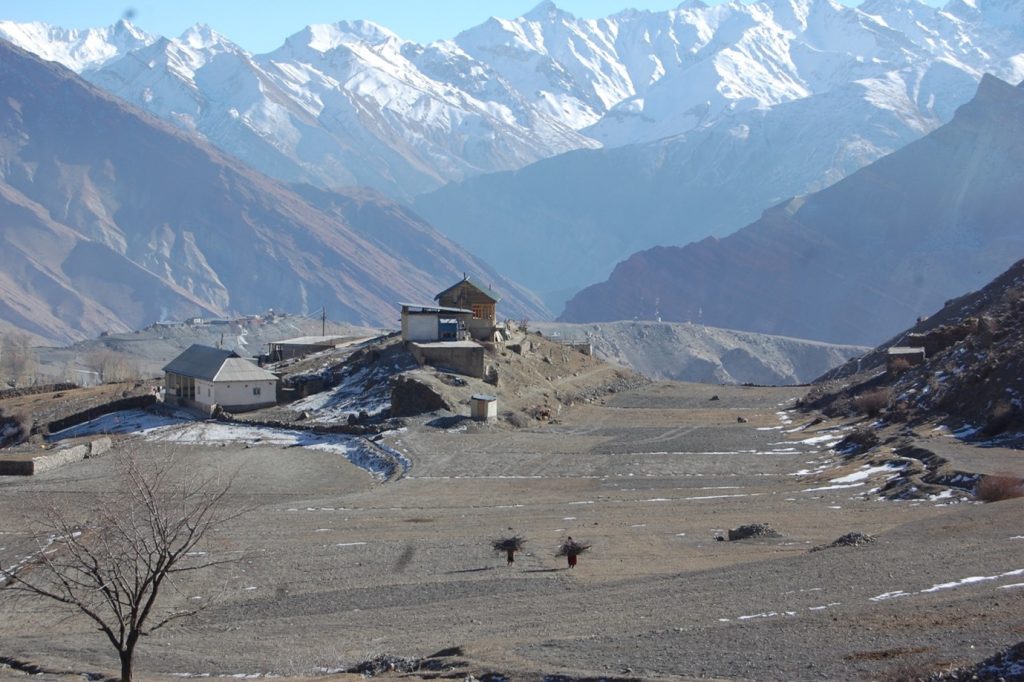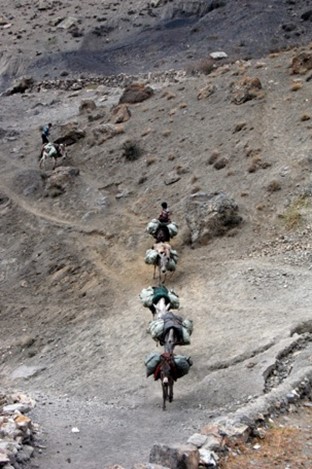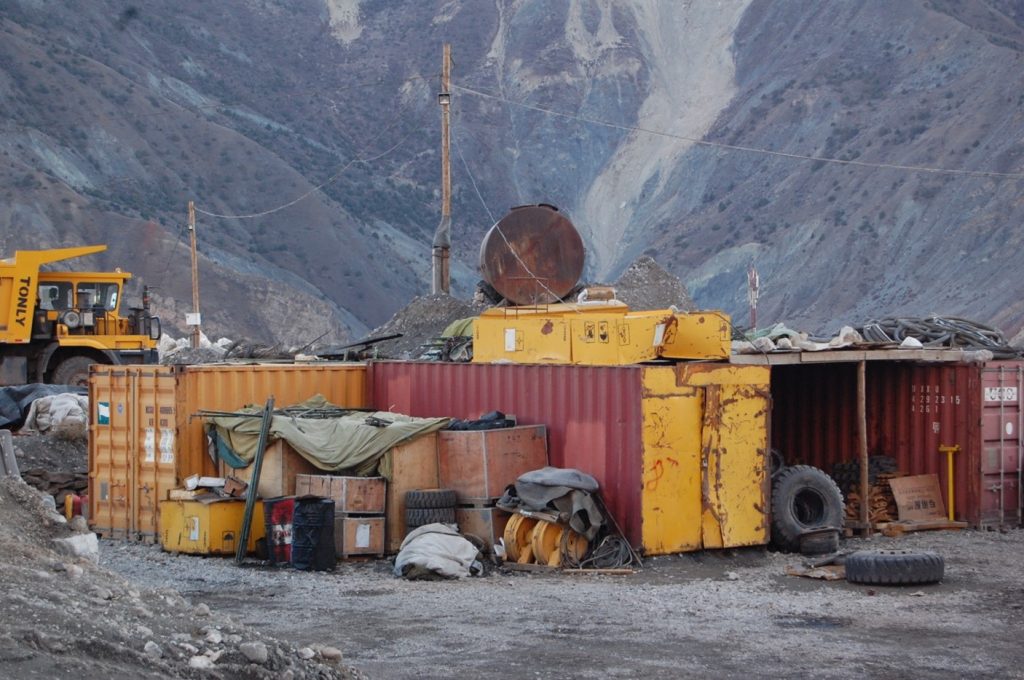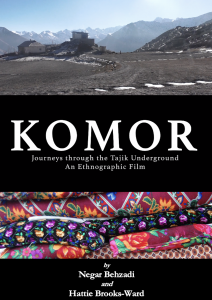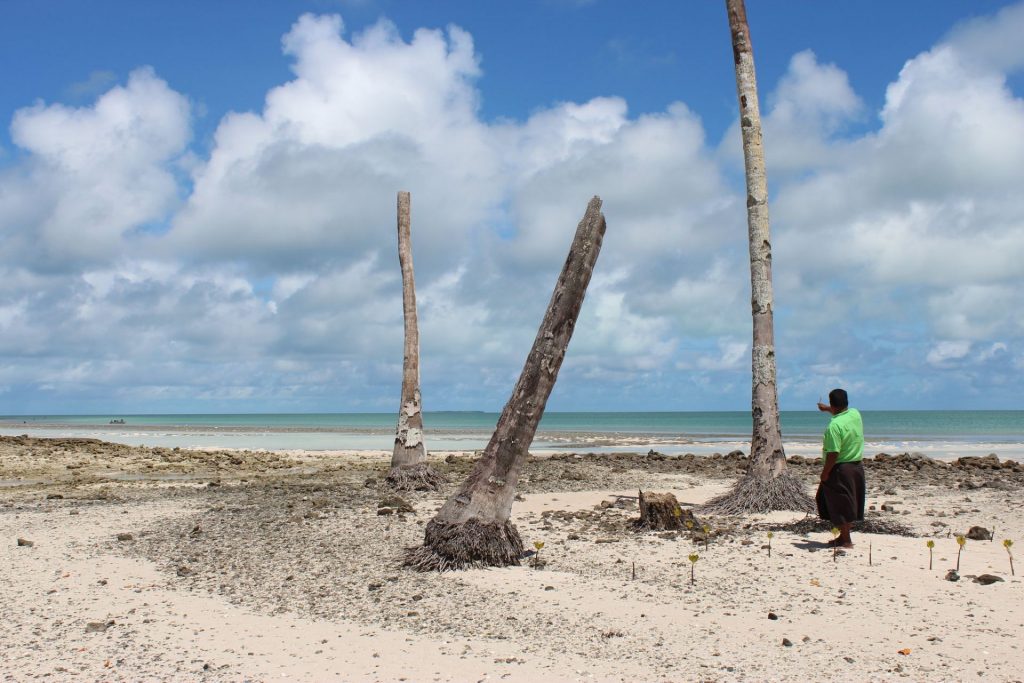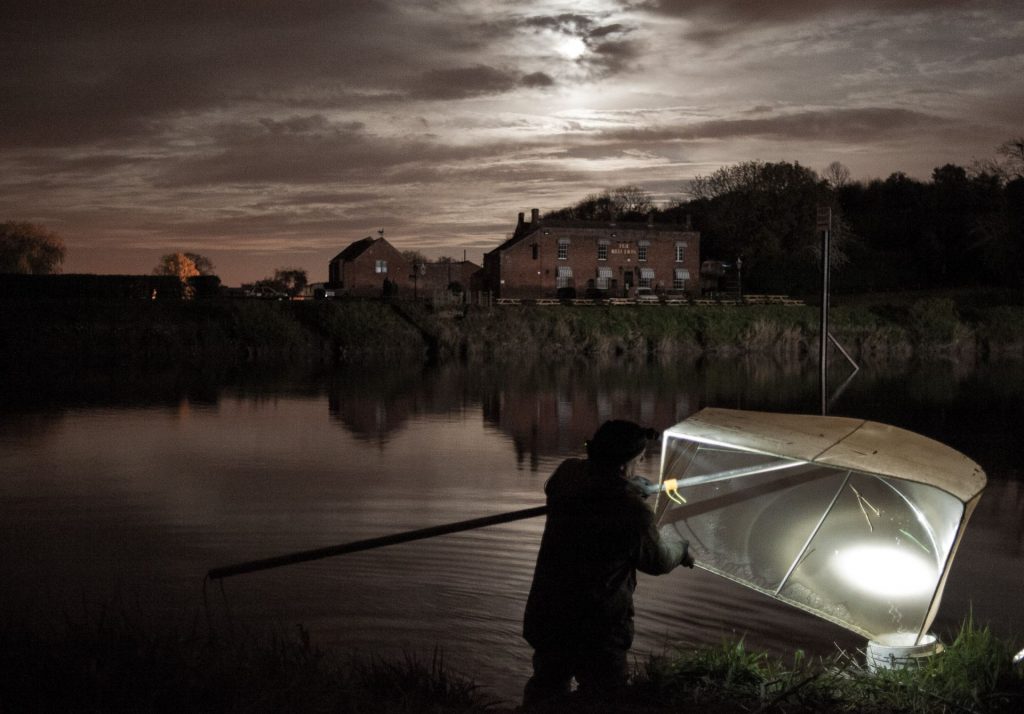New writing on migration and mobilities – an MMB special series
By Julia Morris.
My book, Asylum and Extraction in the Republic of Nauru (2023), looks at the impacts of outsourcing asylum to the world’s smallest island nation. The Pacific Island of Nauru was almost entirely economically dependent on the phosphate industry in the twentieth century. After the wealth it derived from phosphate extraction was depleted in the 1990s, the sovereign state resurged on the back of the asylum industry by importing Australia’s maritime asylum-seeking populations. On an on-then-off-again basis, following 2001 and 2012 agreements with Australia, anyone who makes their way by boat and claims to be a refugee in Australian territorial (now excised) waters is offshored to Nauru for refugee processing and resettlement.
I wrote this book at a time when governments worldwide were hunkering down with populist policies of externalised border enforcement. For decades, the EU has toyed with funding countries across Eastern Europe, North and East Africa, and Central Asia. The US has experimented with several extra-territorial asylum schemes, including processing Haitian asylum seekers in Guantanamo in the 1990s. Many Asian countries, including China, Japan, South Korea and Taiwan, have implemented restrictive detention and temporary visa practices for African migrants, in particular. Now, these arrangements have been given immense visibility with the UK government’s much debated Rwanda deal. Like Nauru, migrants – largely from Albania, the Middle East and South Asia – could be sent 4,000 miles south-east of where they lodged their asylum applications.
My book takes a different approach to tackling the global trend of outsourced asylum. It moves beyond arguments that centre on the erosion of asylum and international law. Rather than a benevolent system under threat, I argue that asylum is extractive. I make this argument by weaving between discussions of Nauru’s mineral and migrant extractive industries. My fieldwork in Nauru starkly revealed just how deeply asylum is an extractive industry. Nauru operated as a company town around phosphate and refugees, where an entire industrial assemblage of labourers and expertise, technologies and representation, worked to bring both sectors into being. By detailing the expansiveness of the phosphate and asylum industries, my work demystifies commodities that have immense fetishistic power. It shifts critical attention toward the international NGOs, state agencies, lawyers, activists and migrants that allow boom town sites to ‘pop into visibility’ in modular fashion, as Hannah Appel puts it when discussing the offshore oil and gas industry.
But, of course, this engineering is place specific and embedded in localised political economies (from Nauru to the Mediterranean), even if the wider asylum industry assemblage is in some ways standardised. Nauru’s boom story around refugees owes itself to the phosphate industry pathways that preceded it. The island’s colonial foundations around global extractive industries shaped its industrial fabric in the present. These structural relations were made evident to me almost daily. Not long after relocating to Nauru, Georgia, a Nauruan friend and phosphate worker, took me to ‘refugee royalties day.’ Similar to ‘phosphate royalties day,’ held down the road, landowners would collect monthly rental payments from the Australian government for leasing their land for buildings connected to the asylum industry. The nineteenth century system of land holdings from the era of colonial extraction structured these contemporary industry land negotiations. Scholars such as Tarcisius Kabutaulaka have found a similar relationship between extraction and land tenure in other colonial industry sectors. The process of resource exploitation produces a culture characterised by rapid monetisation, where land and humans are inscribed as economic commodities for generating financial income.
But while the asylum industry has been immensely profitable for some local islanders, it also – like phosphate mining – has harrowing consequences. The reality of cohorts of migrants from far different regions of the world, none interested in being there, and many with very particular psychological needs, are just some of the repercussions of this economic sector. For asylum seekers and refugees, most with devastating pasts and equally hazy futures, tragic instances of self-harm and suicide were commonplace. Australian psychiatrists and clinicians were on fly-in-fly-out cycles locally: many of them have since spoken out about the policy’s damaging effects.
Many islanders left jobs in Nauru’s schools and public service sectors to work at the regional processing centres. This option was more financially lucrative, but led to a ‘brain drain,’ as one local called it. Residents also described to me the corruption and greed that overtook the government. During my fieldwork, protests against local politicians were commonplace. Opposition MPs would form always-shifting alliances, using Australian media interest in refugees to encourage international and local support. Like the extractive industry communities that anthropologists and other scholars describe, torn apart by internal or intercommunity conflicts, fluctuating prosperity and contentious repercussions, Nauru became tied into the repeating destructions of a resource-cursed state.
In my work I describe the uneven placements of where containment industries are located, and the racialised populations that are governed, as a form of environmental racism. Toxicologists and scholars of extractive industries use this concept to describe the process whereby hazardous waste facilities are overwhelmingly sited in communities of color. In my view, the disproportionate exposures of hypercriminalisation, violence and precarity that largely Black and Brown migrants are subject to is also a form of environmental racism that is enacted on migrants’ bodies, as is the siting of carceral sectors in minority and low-income communities. Much like the toxicological ‘body burden,’ these harms can accumulate in people’s bodies over time. The conversations I had with migrants undergoing the asylum process and with local islanders battling the effects of phosphate extraction form part of the elongated exposures to violence experienced by certain populations and geographies. Both phosphate and asylum extraction centre around unnatural metallurgical processes with untold social and ecological costs. In the phosphate industry, dust and toxins are released into the atmosphere with tremendous pollutant effects. In the asylum industry, people are compelled to present themselves through legal narratives of trauma in order to move elsewhere. Linking the asylum industry boom to previous extractive practices in the landscape shows asylum to be part of the ‘hyper-extractive assemblage’ that scholars of resource extraction, such as Macarena Gómez-Barris and Michael Watts describe, premised on continued racial subordination.
A major difficulty in making these arguments is that many critics and publics have uncomfortable, mixed feelings in approaching people – and especially refugees – as commodities. Periodically, global media campaigns give visibility to the Nauru arrangement but often through a victim-villain binary. Since agreeing to the Australia deal, Nauruans have been targeted through global media and liberal advocacy campaigns as ‘refugee beaters’ … ‘cruel in the extreme’ … a heart of darkness, where refugees are ‘hacked with machetes’ by the local population. Such representations are not unique to Nauru. Based on western colonial stereotypes of the Indigenous, Black and Brown as savage, and the refugee as racialised suffering Other, this construct is mobilised by refugee solidarity advocates on a global scale to leverage against outsourcing asylum. The sorts of racist colonial tropes that Nauruans contend with are already in use by critics who claim that Rwanda is an ‘authoritarian state with extreme levels of surveillance’ and that it ‘tortures and murders those it considers to be its opponents.’
These Western mis/representations have troubling effects. In Nauru, the suffering-savage slot instigated fractious relations. As an advocacy strategy, it did little to endear locals to the plight of asylum seekers. In fact, it obscured powerful solidarities between locals and refugees that could have given added momentum against outsourcing asylum. And ultimately, I argue in my research, this imaginary has a fundamentally extractive character. It provides more political economic and moral value to the global asylum industry, which cyclically carries out operations in places like Nauru.
My book gives hope that we can disrupt these models of perennial extraction. By seeing the international refugee regime as an extractive process, we might better imagine alternative systems of free movement that go beyond adjudicating human worth and solidifying hierarchies of suffering. We can move towards using a more egalitarian language of solidarity, coalitions and commonality, rather than one of suffering, salvation and #RefugeesWelcome valuation. The logic of ‘mobility commons,’ put forward by Anna Nikolaeva and Mimi Sheller, is a theoretical framework that I am exploring using the creative arts and design. Together with the Berlin-based Organisms Democracy, I have been working on participatory projects in wild garden spaces with students and publics around cohabitation. Alongside this, I design experiential walking practices that encourage more expansive understandings about borders seen and unseen. These projects are inspired by powerful calls to ‘de-exceptionalise’ and ‘methodologically de-nationalise’ migration to broad publics. Outsourced asylum regimes continue to advance, as do political narratives surrounding migrant deterrence from global south to north. It becomes ever more urgent to explore the relationship between privileged and stigmatised (im)mobility, and commonalities of experiences.
Julia Morris is Assistant Professor of International Studies at the University of North Carolina Wilmington. Her research focuses on migration governance through the framework of resource extraction, from ethnographic fieldwork in the Republic of Nauru, Australia, Geneva and Fiji to research projects in Guatemala, Jordan and Lebanon. Her book, Asylum and Extraction in the Republic of Nauru, is recently published with Cornell University Press, with a 30% discount available here.
Julia will be giving an open air, interactive talk on ‘Territory and Citizens: Reimagining Cohabitation in the City‘ at MMB’s (de)Bordering plot on 3rd May.


